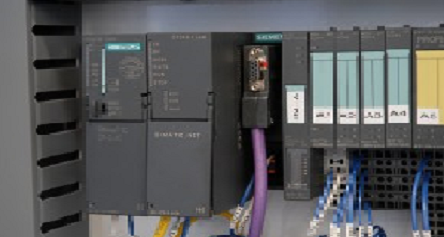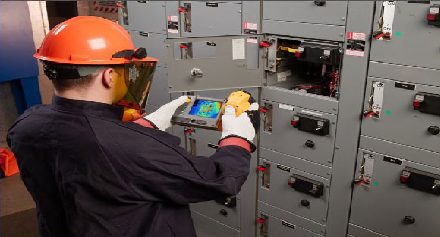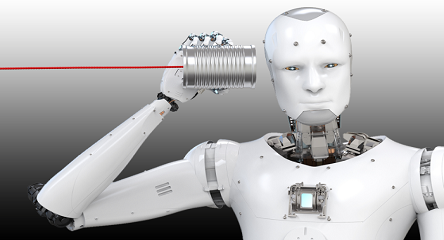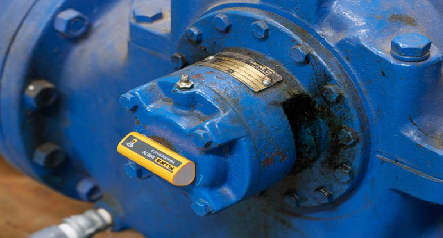IRISS specializes in condition-based inspection models. We have infrared windows, ultrasound instruments, and more. The window allows you to perform infrared, ultrasound, and visual inspections.
Condition-based inspection models utilize condition-based monitoring technologies to inspect electrical equipment assets. One technician can do three jobs in two minutes. These methods include infrared thermography, airborne ultrasound, motor current analysis, partial discharge testing, power quality management, ultraviolet (corona) imaging, vibration analysis, alignment testing, oil analysis, and visual inspections.
Unfortunately, the majority of CBM equipment requires open-panel inspection, exposing inspectors to energized components in such a way that they can be electrocuted or cause an arc flash. Electrical hazards are increased exponentially through opening or closing doors, removing or replacing a cover, reaching into or leaning into equipment, removing or replacing internal barriers, operating switches or circuit breakers, racking a circuit breaker, and using tools or test equipment. Electrical hazards can lead to fatalities, though they should not with the safety precautions we should be using today. We need to remove the actions described in this paragraph. We should not be opening doors, for example, and there has to be a way to perform the inspections safely.
How Do the Tests Measure up?
So where do we start? First, identify the components you wish to inspect, for example, cable connections, bus bar connections, isolator or circuit breaker connections. Next, identify the CBM technology you will use. Let’s look at six tests as examples: infrared scan, ultrasound scan, partial discharge, motor current analysis, ultraviolet scan, and visual inspections.
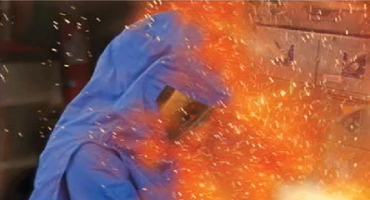
All of the above systems fit into CBM. The NFPA 70B recommends a minimum of 40% load, so you need to make sure you have 40% load on your system.
IRISS CBM electrical maintenance safety devices include inspection windows, IR ports, and online monitoring. This is the kit we at IRISS use.
First, let’s start with a good electrical connection and circuit as a baseline. None of our six tests found an issue. With those tests and a visual image, we can safely conclude that nothing is wrong. In that case, there is no need to service the equipment. We leave it alone.
Second, we have an overloaded electrical connection and circuit. Infrared will register uniform heating of the completed circuit. Ultrasound will not pick up anything (because there is only heat). Partial discharge will not pick up anything (it normally works above 3,000–4,000 V). MCA
will register a load imbalance. An ultraviolet camera, one of the most expensive cameras on the market, is designed to do one thing only: pick up corona. Therefore, it won’t find any issues here. A visual inspection may show us heat damage on cables in extreme cases.
Third, we will look at resistance or loose electrical connection. Infrared will show localized heating at the bolted connection. Ultrasound may find arcing or tracking if the fault is severe enough. Partial discharge will not find anything because the voltage is still too low. MCA may show elevated temperature or resistance reading. An ultraviolet scan will find nothing. A visual inspection may show us heat damage on cables in extreme cases.
Fourth, let’s look at resistance or loose cable lug connection. This can be confusing to someone who has not been trained. Here, the lug is actually failing—the cable has broken down internally, the lug expands and contracts, and this causes high resistance. Infrared will show localized heating at the lug or the cable. Ultrasound may find arcing or tracking if the fault is severe enough. Partial discharge will not find anything. MCA may show high resistance. Ultraviolet will not find anything, and you will not see anything in a visual inspection. The only way to resolve this issue is to re-terminate: remove the termination, cut back the cable, and re-lug it.
Fifth, we have a partial discharge or cable insulation failure. Nine times out of ten, partial discharge will not produce heat and, thus, will not be picked up by infrared. Ultrasound will pick up the corona, which is the first sign of failure. As for a partial discharge test, transient earth voltage (TEV) will be present, but the results are voltage related. Again, it’s hard to pick up anything of medium voltage with this test. MCA may find issues in extreme cases. Ultraviolet will find something because this is corona. And corona gives off a white powder, the oxidation of the chemicals, which you will find in a visual inspection.



